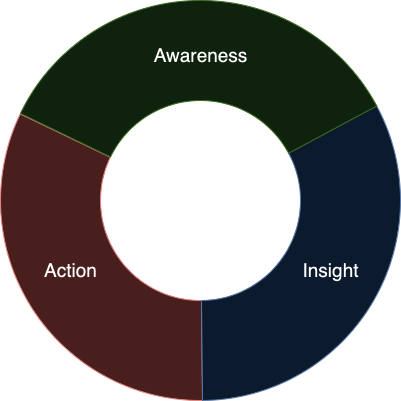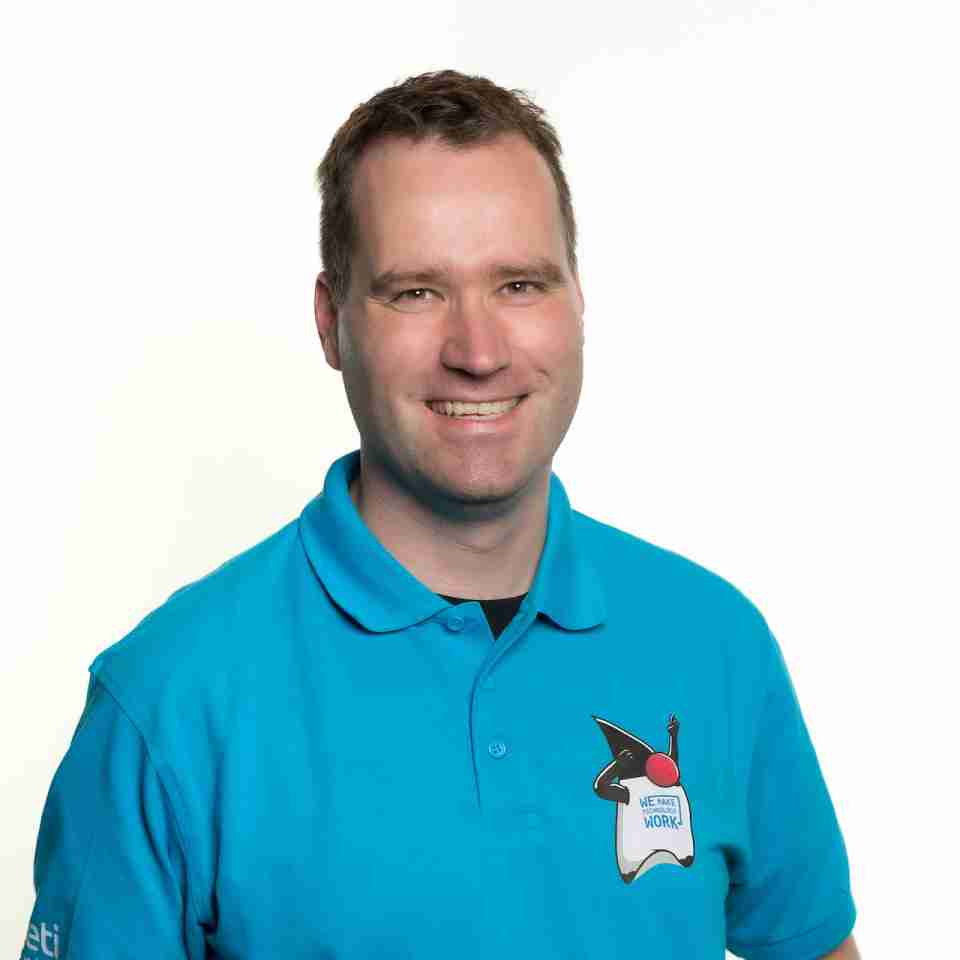The IT-industry has a large role to play in tackling the sustainability challenge. With our footprint rising year over year due to growth and innovations, it would be irresponsible if we ignore the task before us.
In a recent article, I shared a few concrete actions to take. However, it never starts with just actions. In this article, we take a step back and look at the challenge from a higher and more abstract viewpoint.
Dealing with the sustainability challenge is hard and will require a long-term commitment and sustained effort to ensure the greatest sustainable impact. This effort needs to go beyond isolated initiatives and be part of a larger organisation-wide strategy.
As part of your strategy, it is good practice to model your approach.

In the model above, three stages are shown. The length and depth of each stage depend on the context and the strategy of the organisation.
Awareness
It all starts with awareness. Not only in the boardroom, but also with individual contributors, in Agile/DevOps teams, and all employees in between. Everyone has a role to play, and the sooner they are aware of that, the better it is.
This does not mean that the stage needs to be fully completed everywhere. Spreading awareness can start in parts of an organisation and can continue for as long as needed, if not indefinitely. It is also very much a possibility to repeat the stage in different forms at different levels, harnessing the power of repetition. The model reflects that awareness is never fully completed.
Common activities that can happen during the awareness stage are inspiration sessions, success stories of other departments and organisations and business case presentations of both the need and the benefit of IT sustainability as a strategic asset.
Insight
Once sufficient awareness is fostered, it is time to start creating insight. This insight can often already be found by looking at existing data, combining existing data sources, and making slight adjustments to dashboards.
A good inventory of IT assets combined with metrics of those systems and applications can already show the first gains from day one. When insight is first created, the information gained will be coarse grained and incomplete. However as more and better data sources are combined with better dashboards and aggregation the insight will become better and better.
All the work that is being done in the insight stage will also help in following progress, establishing baselines and setting objectives and key results. This stage will therefore also be ongoing.
There is one big risk in this stage and for the entire model. It is imperative that Shadow IT is reduced to an absolute minimum as it is impossible to factor in aspects that are unknown.
Action
The first insight will immediately show initial actions to perform and prioritise. The type of action very much depends on the insight given and the type and form of IT landscape. Actions can range from consolidating hardware, to replacing hardware with low energy equivalents.
Other actions might result in architecture shifts or even decommissioning systems that are no longer feasible when looked at from a sustainable viewpoint.
Conclusion
This article only scratches the surface of this relatively simple model. While the model has three stages, those stages will at one point be executed simultaneously at different parts of the organisation and in different forms.
This results in continuous awareness, continuous refinement of insight and continuous action.

 English | EN
English | EN 
